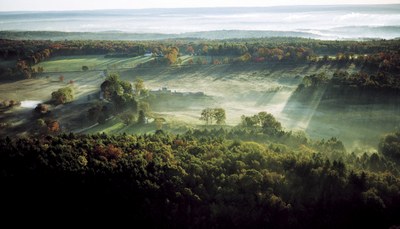Cultural Landscapes
 The latter is defined as "a geographic area that includes cultural and natural resources and the wildlife therein, which is associated with a historic event, activity, or person or exhibits other cultural and aesthetic values." Such places tell a story, map our journey, and are part of a national heritage and legacy. These special sites that reveal our evolving relationships with the natural world provide abundant economic, ecological, social, and recreational opportunities.
The latter is defined as "a geographic area that includes cultural and natural resources and the wildlife therein, which is associated with a historic event, activity, or person or exhibits other cultural and aesthetic values." Such places tell a story, map our journey, and are part of a national heritage and legacy. These special sites that reveal our evolving relationships with the natural world provide abundant economic, ecological, social, and recreational opportunities.
There are four general types of cultural landscapes, which are not mutually exclusive: historic sites, historic designed landscapes, historic vernacular landscapes, and ethnographic landscapes. These are defined as:
Historic Designed Landscape - a landscape consciously designed or laid out by a landscape architect, master gardener, architect, or horticulturist according to design principles. The landscape may be associated with a significant person(s), trend, or event in landscape architecture; or illustrate an important development in the theory and practice of landscape architecture. Examples include parks, campuses, and estates.
Historic Vernacular Landscape - a landscape that evolved through use by the people whose activities or occupancy shaped it. The landscape reflects the physical, biological, and cultural character of those everyday lives. They can be a single property such as a farm or a collection of properties such as a district of historic farms along a river valley. Examples include rural villages, industrial complexes, and agricultural landscapes.
Historic Site - a landscape significant for its association with a historic event, activity, or person. Examples include battlefields and president's house properties.
Ethnographic Landscape - a landscape containing a variety of natural and cultural resources that associated people define as heritage resources. Examples are contemporary settlements, religious sacred sites and massive geological structures. Small plant communities, animals, subsistence and ceremonial grounds are often components.
Whatever the type of cultural landscape, resource managers and scientists will conduct research and develop management plans in order to preserve these special places for current and future generations. Research helps to identify the values that make the landscape significant by determining the historical development, unique features and other characteristics. The information from research, including current integrity and condition of the landscape, is vital when making planning decisions about treatment, future management, and preservation maintenance of the area. Through sustainable management, cultural landscapes can maintain existing integrity and character into the future.






















